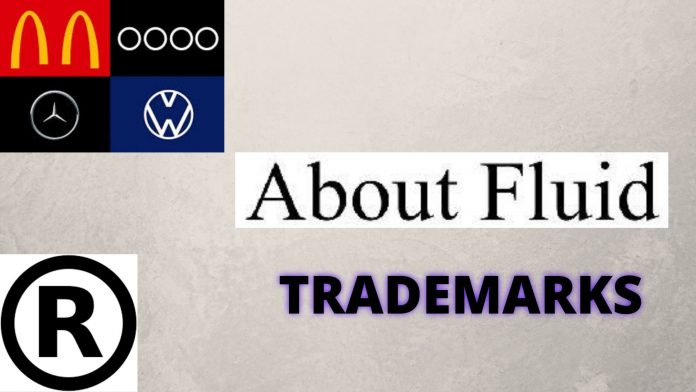This article is written by Triveni Singal, who is pursuing a Certificate Course in Intellectual Property Law and Prosecution from LawSikho.
Table of Contents
Introduction
Property in legal terms is described as an object over which the right of ownership extends. It covers objects over which one has the exclusive right of control and disposal. Property is of two sorts, corporeal and incorporeal. Corporeal property, also apprehended as tangible property, refers to material things like houses, books. Incorporeal property, also known as intangible property refers to immaterial things like Intellectual Property that emerge out of the human creative mind and labor. Thus, Intellectual Property Rights guard this Intellectual Property that a man has constructed using his skill, time, and labor. The several kinds of Intellectual Property Rights are Copyright, Trademarks, Patents, Industrial Designs, Geographical Indications, etc. In this article, we shall focus on Trademarks. 
A closer look at the definition and types of Trademarks
A Trademark comprises any word, name, symbol, device, shape of goods, packaging, the combination of colors, etc. which a person adopts and which helps to identify and distinguish his goods/services from those of others.
There are three main requirements of a trademark-
- It should be a mark (Section 2(1)(m) of the Trademarks Acts, 1999).
- It should be capable of being represented graphically (Section 2(1)(zb) of the Trademarks Acts, 1999).
- It should be capable of distinguishing the goods/services of one person from another (Section 2(1)(zb) of the Trademarks Acts, 1999).
There are numerous kinds of trademarks as mentioned hereunder-
Product mark
It refers to trademarks applied to goods and is used to identify its source and distinguish one manufacturer’s products from others. Example- Wordmark “Cadbury”, “KitKat” on chocolates.
Service mark
A service mark identifies the source of service and distinguishes the services of one proprietor from that of another. It is denoted as ‘SM’. Example- Starbucks is a service mark of one of the most renowned coffee houses.
Collective mark
It distinguishes the goods or services of one association from those of others. Example- CII (Confederation of Indian Industry).
Certification mark
They are used to define the standard of a good or service provided. They guarantee the consumers that the product meets safety and other prescribed standards. Example- ISI mark.
Shape marks
It refers to the shape of goods and their packaging as long as it can be represented graphically.
Example- The shape of the ‘Gorbatschow’ branded vodka bottle.
Sound mark
Nowadays sounds have become an important part of an advertisement. The viewer immediately related the music to a particular brand on hearing the commercials. In such cases, the sound may be regarded as a Trademark and also eligible for registration. Example- MGM’s roar of a lion
Fluid Trademarks
Fluid Trademarks are modifications of the initially registered Trademarks which coexist with them and are so made in an attempt to augment consumer interest and reinforce brand loyalty. These variations typically retain certain characteristics of the original trademark while including new elements. Thus, Fluid Trademarks are marks that change with time. The Fluid Trademark may be created by altering words, symbols, design, color, or any other element of the underlying mark.
The concept of Fluid Trademarks is a complete U-turn from the idea behind traditional Trademarks, as the latter is based on the adoption of unvarying and consistent mark to make the goods/services of the owner distinguishable, while the former attains consumer engagement by providing dynamic, striking and novel alternatives to the original mark. It must be noted here that the Fluid Trademarks must be designed in such a way that all the various versions of the Trademark identify with the same source.
Examples of fluid trademarks
1. Amul Girl
This famous Indian logo is used regularly to create parodies or commentary of any political or social topic relevant to the society at the time.

2. Google Doodles
All of you must have seen how Google’s homepage changes almost every day according to any festival or major event that must have taken place on a particular day.

3. COVID related changes
Many brands changed their logos during the COVID-19 pandemic such as BMW, McDonald’s, and Audi spaced out their logos to spread awareness about social distancing.

Can Fluid Trademarks be registered as Series Trademark?
Series trademarks include a range of Trademarks, in respect of the identical or similar goods or services or their description, which resemble each other as to their distinctive characters and differ only as to matters of a non-distinctive character not significantly affecting the identity of the Trademark. (Example- McChicken, McPizza, McCafe are examples of Series Trademarks of the famous fast food service provider McDonald’s).
Thus, any variation in the non-distinctive features of each mark must leave their visual and conceptual identity principally unchanged. Such a family of Trademarks may be registered as a series in one registration. Thus, the provision of Series Trademark under Section 15 can be applied only if all the variants to be used for representing the trademark can be anticipated. So, even though to a large extent this provision explains the concept of fluid trademarks, the dynamic nature of a fluid trademark is an obstacle on the path of its registration. As seen in the examples above, the change brought by brands to their logos during the COVID pandemic could not have been anticipated before.
Also, the said section does not allow for updating the trademark application into a series trademark after the registration of a single trademark has taken place. Thus, we can conclude that Section 15 does not account for the dynamic and unanticipated nature of Fluid Trademarks and as a result, the current position of India regarding registration of series Trademarks does not satisfactorily apply to fluid trademarks also.
Registration of Fluid Trademarks : problems and solutions
From our foregoing discussion, we can conclude that there are some prominent issues that arise on the registration of Fluid Trademarks.
- Firstly, Fluid Trademarks are dynamic and are short-lived and the brand owners revert to their original trademarks once their modified trademark is no longer relevant (Such as the alterations made by McDonald’s, BMW, and Audi as seen above would be irrelevant once the COVID pandemic ends).
- Secondly, even if the altered mark is registered it is unlikely that it will be used genuinely after registration, and so the mark may be canceled due to non-use.
- Thirdly, fluid marks work better for well-known brands otherwise, the very purpose of creating the variations would be defeated.
- Fourthly, it would be extremely difficult for the brand owner to challenge third-party infringements when the mark is subject to continuous alterations and no consistent use of variants of the mark has been established.
- Lastly, not to forget registration and renewal of all variants of the Trademark will be a costly affair.
Owing to these reasons, registration of a fluid mark is not a priority of the owner, as registration of a Trademark is in itself a long cumbersome procedure. So what is the solution because the mark still has to be protected against passing off and infringement?
- Register the template and only change the internal aspects of the mark to create a fluid Trademark (the process of registration explained below). Thus, each variation comprising a Fluid Trademark should maintain the identifying characteristics of the registered template mark, such as color combination or stylized manner of writing.
- Continue using the underlying mark in its original form when adopting a fluid mark. This will ensure that the original mark is not canceled for non-use.
- Before adopting a fluid mark, ensure that the original Trademark is strong and well known so that the public can associate the fluid mark with the original mark and at the same time identify the modifications made, thereby enhancing the strength and fame of the brand.
- Conduct an availability search before using a new variation of an original mark to ensure that it does not infringe on any third party’s Trademark rights.
- Draft terms of use that cover “rules for proper usage” for your mark, to allow the use of the mark in a certain way that is subject to certain requirements.
- Have a clear enforcement strategy including strategies for monitoring the brand in the market and investigating infringers and counterfeiters.
As Fluid Trademarks are created at different points in time, it is wise to file separate applications for each fluid mark if the brand owner wishes to register them. In a suit, the Trademark owner must be able to articulate with clarity the scope of the fluid Trademark variant over which it claims rights. Nevertheless, in India unregistered trademarks can be protected by filing a suit for passing off action, and thus, the owner can still enforce his rights. This was well established in the case of Proctor and Gamble vs. Joy Creators, wherein the Delhi High Court held that a mark doesn’t need to be a replica of the registered Trademark to constitute infringement. As per the court, if the plaintiff succeeds in proving that the mark adopted by the defendant resembles its own mark in a substantial amount it shall be sufficient. Though there are no Indian cases on Fluid Trademarks the following case in the US is considered one of the most important regarding the same.
Louis Vuitton Malletier vs. Dooney Burke
In this case, the plaintiff contended that their stylized version of the Toile Monogram had been copied by the defendants on their products as depicted below-

It was held that Louis Vuitton’s mark is inherently distinctive and that it had acquired secondary meaning, and was therefore eligible for protection. The court also pointed out that while Fluid Trademarks may give substantial freedom and scope to be creative around Trademarks, the right of monopolizing on certain non-distinctive features may not always be proven under law. The question of likelihood leading to confusion needs a stringent discharge of proof.
Registration process
Thus we have seen that the template of a Fluid Trademark should be registered to provide an additional layer of protection to them. One application is filed for registration of a Trademark for different classes of goods/services, but the fee shall be applicable for each such class of goods/services. Before applying for the registration of their trademark, a person can either do a public search of trademarks to see if his Trademark is similar to any other Trademark or is distinctive, or can request preliminary advice by the Registrar as to the distinctiveness (Section 133 of the Trademarks Acts, 1999).
Any person who claims to be the proprietor of a Trademark to be used by them can apply for its registration to the Registrar by providing the following documents-
- Signed Form 48 (used to provide an attorney with authorization to file your Trademark application)
- Form TM-A
- Identity proof of the Trademark owner- It can be a PAN card, passport, or Aadhar card.
- Incorporation certificate (if it is a company or LLP)
- UdyogAadhar registration certificate- The government fees for Trademark filing for companies having UdyogAadhar is Rs. Rs. 4500. However, they have to pay Rs. 9000 to file if they do not possess UdyogAadhar.
- Logo, if applicable and available.
- Address proof.
The documents can be served personally by hand, by post (prepaid letter), or electronically. All applications, notices, statements, or other documents except trademarks, must be typewritten and printed in Hindi or in English in legible characters with deep permanent ink upon strong paper of A-4 or legal size on one side only and must have on the left-hand side thereof a margin of not less than four centimeters.
If the applicant is a startup/individual/small enterprise then the fee in physical filing is Rs.5000 and in online filing is Rs.4500. In all other cases, the fee is Rs.10000 for physical filing and Rs.9000 for online filing. (Note: Fee is for each class and for each mark)
E-Filing process
- Register on the official website of the government for e-filing of Trademark applications. Registration can be done by the proprietor/attorney/agent.
- After registration, the mail is sent to the provided email ID containing details such as User ID and password.
- Log in into the system using the User ID and password/digital signature.
- On successful login, your username and user code will be displayed on the header.
- After logging in, click on “New Applications” and select File TM-A, and put the class into the textbox, and submit. A temporary application number is displayed.
- Click on the close sign then go to the Drafted application list.
- Click on the edit link then open the TM-A form and fill all the fields along with the digital signature.
- After successfully uploading the sign, then go into the payment tab and click on make payment by selecting the particular application.
In case of registration of a Trademark already in use, the application must contain a statement of the period during which, and the person by whom it has been used in respect of all the goods or services. In case, the use of the Trademark is claimed prior to the date of application, the applicant shall file an affidavit testifying to such use along with supporting documents. Every mark in the series application must have the same goods/services description.
Conclusion
There is no doubt that Fluid Trademarks are advantageous. They are more eye-catching than a static traditional Trademark, they serve as a dynamic marketing tool, maintain the interest of the consumers in the brand, and not to forget they spread awareness by interacting with the buyers. Thus, the fact that there is no statutory protection afforded to Fluid Trademarks under the Indian laws other than the common law remedies establishes that there is a dire need for an addition in the existing laws for protection against infringement of such trademarks. Protection against infringement of their marks, irrespective of their nature, is a top priority for owners as it can otherwise lead to huge losses to the business, reputation and goodwill. Since the changing nature of fluid marks is difficult to be protected, the focus should be on the core Trademark on which the fluid variants are based; so that the fluid marks related to that main Trademark will be easily identified and protected.
References
- https://www.tiplpr.com/post/fluid-trademarks-legal-implications-and-its-use-in-time-of-covid-19
- https://spicyip.com/2020/08/fluid-trademarks-an-alter-ego-for-brands.html
- https://www.kashishipr.com/blog/fluid-trademarks/
- https://ipindiaonline.gov.in/trademarkefiling/UsefullDownloads/User_Manual_etrademarkfiling.pdf
- For example, Google highlights its “Do’s and Don’ts” as part of its brand resource centre available on its website (see here)
Students of Lawsikho courses regularly produce writing assignments and work on practical exercises as a part of their coursework and develop themselves in real-life practical skills.
LawSikho has created a telegram group for exchanging legal knowledge, referrals, and various opportunities. You can click on this link and join:
 Serato DJ Crack 2025Serato DJ PRO Crack
Serato DJ Crack 2025Serato DJ PRO Crack










 Allow notifications
Allow notifications



